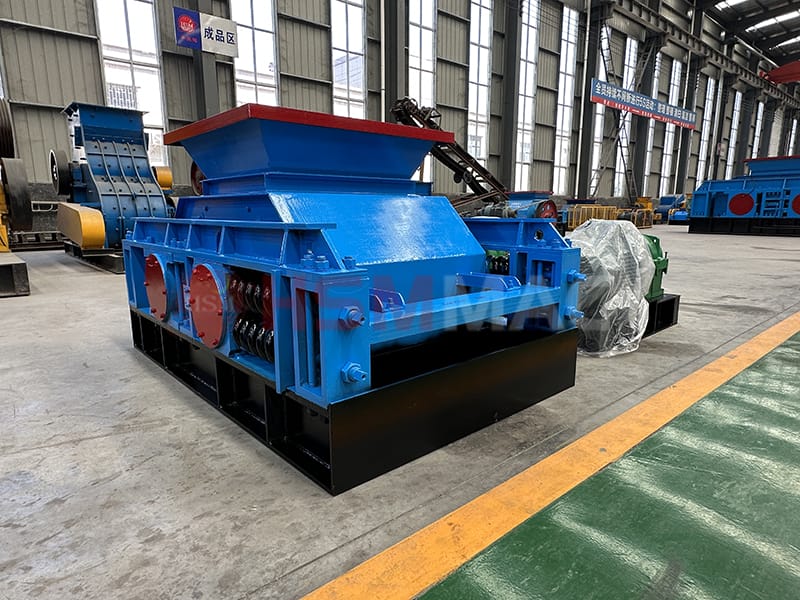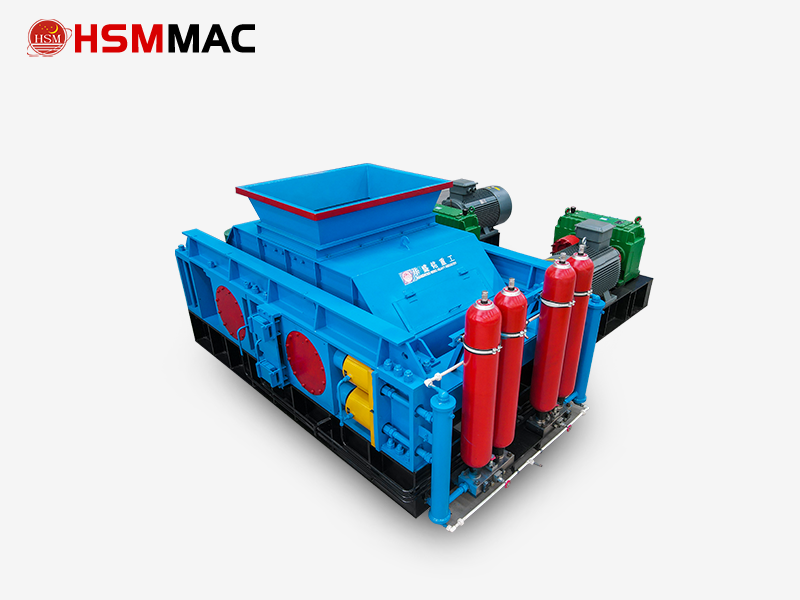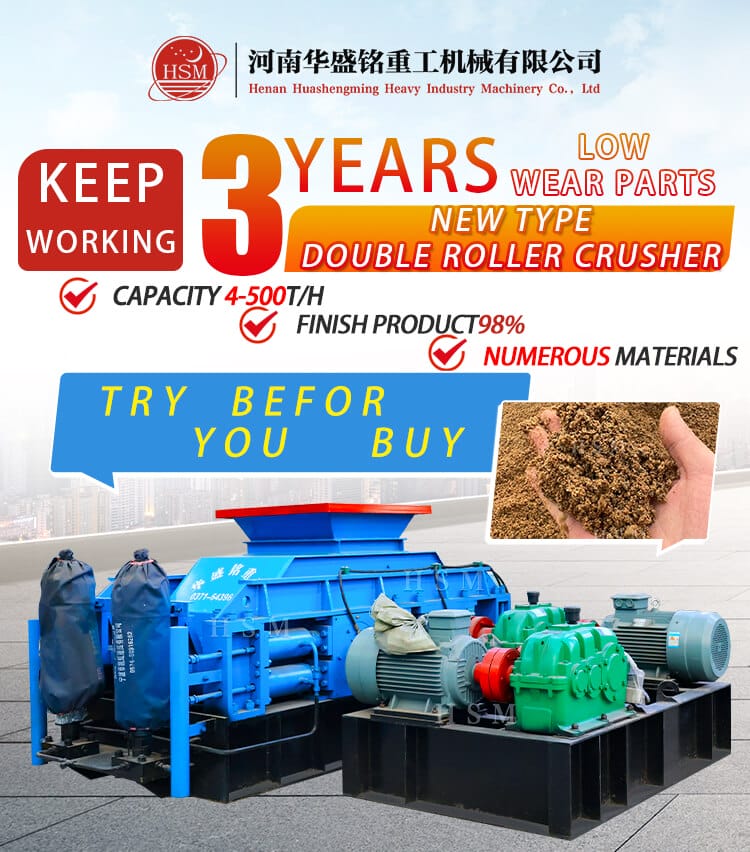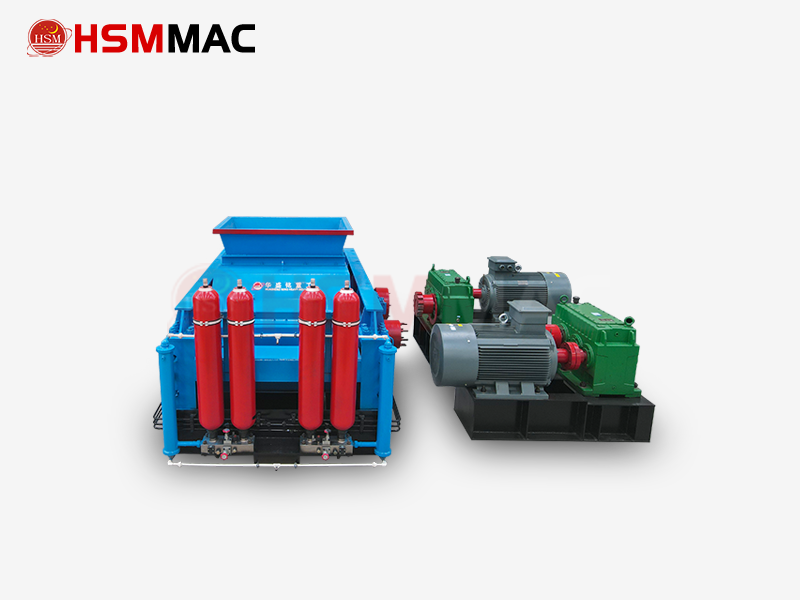The mobile roller sand-making machine is a mobile sand-making device, particularly suitable for mobile operation scenarios (such as construction sites and temporary mining in mines).
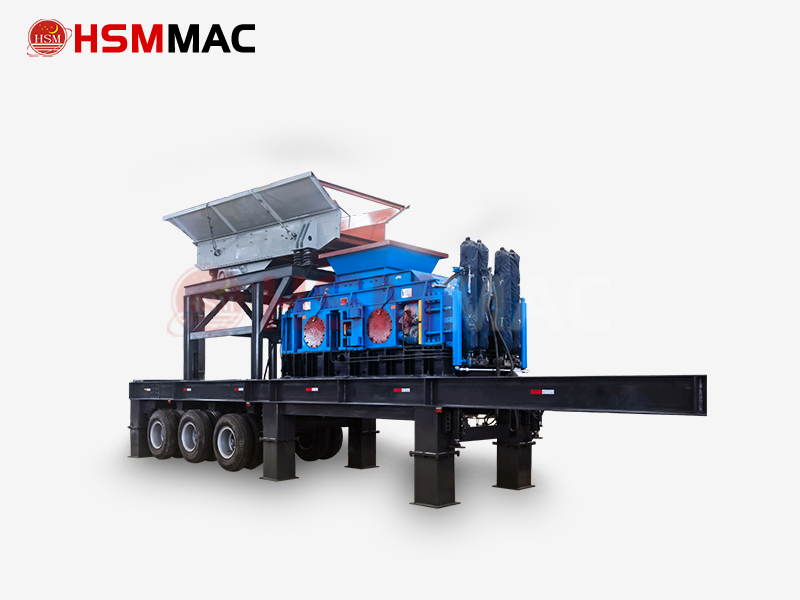
The mobile roller sand-making machine
1. Core structure and working principle of the mobile roller sand-making machine
Modular integrated design
The device is equipped with a wheeled or tracked chassis
Roller crushing principle
Material is crushed through compression and shearing as it passes through the gap between the dual rollers. The roller surfaces can be customised as flat rollers (for fine-grain sand production) or toothed rollers (for coarse crushing of medium-hard materials), with adjustable output particle sizes ranging from 1 to 40 mm.
2. Core Advantages
Flexibility and Cost Savings
No infrastructure installation required: The machine can be directly deployed at the worksite, eliminating the costs associated with fixed production line infrastructure and material transportation.
Follows mining surface movement: Suitable for phased projects (e.g., road construction), reducing equipment idle time.
High-efficiency sand-making performance
High output: Roller compression crushing reduces over-crushing, resulting in uniformly shaped finished sand particles (>80% cubic) that meet building sand standards.
Wet material adaptability: Optional scraper device available to address roller adhesion issues for materials with moisture content ≤35%.
Energy-saving and environmentally friendly
Energy consumption reduced by 20%-30% compared to traditional sand-making lines
3. Huashengming Product Technical Highlights
Wear-resistant roller casing technology
High-chromium manganese alloy rollers undergo special heat treatment, with a service life of 2-3 years (compared to approximately 1 year for conventional equipment), and support customised lifetime roller body replacement-free options.
Power Supply and Adjustment System
Dual-drive system: diesel engine/electric motor switching, suitable for mines without electricity.
Spring + hydraulic dual adjustment: precise control of material particle size, with automatic overload protection.
Note: The entire system supports customised mobile chassis. For models with an hourly output exceeding 100 tonnes, a tracked chassis is recommended.
4. Application Scenarios and Materials
Typical Industries:
Construction Waste Recycling: On-site crushing of concrete blocks, bricks, and tiles to produce recycled aggregate for roadbed filling.
River Pebble/Granite Sand Production: Direct output of manufactured sand to replace natural sand resources.
Temporary Mining Operations: Advancing mining operations at the mine face to reduce mineral transportation costs.
Applicable Materials: Rock, ore, construction waste, with compressive strength ≤160 MPa and moisture content ≤35%, ensuring stable operation.
5 Procurement Recommendations
Capacity Matching
Small-scale projects (≤20 t/h): Select the 2PGT400×250 model, with a cost of 30,000–100,000 RMB and a footprint <50 m².
Large-scale projects (≥100 t/h): Prefer the 2PGY1800×1000 model, which can be configured with a screening module to form a mobile production line.
Operation and Maintenance Points
Anti-adhesion rollers: High-moisture materials (such as powdery soil) require the installation of scrapers.
Regular maintenance: Inspect the wear condition of the roller surface, tighten bolts, and ensure the lubrication system functions normally.
Service Guarantee
Huashengming and other manufacturers provide material testing machines, factory installation, and 24-hour fault response (contact Manager Fan at 152-380-22995).
The mobile roller sand-making machine, with its features of ‘mobile production and controllable particle size,’ has become a core equipment for the transformation and upgrading of the sand and gravel industry. Through wear-resistant technology, intelligent control, and customised services, Huashengming Heavy Industry has further enhanced its competitiveness in mobile sand-making applications. When purchasing, consider production capacity, material characteristics, and after-sales response capabilities, and prioritise suppliers that support on-site testing.












